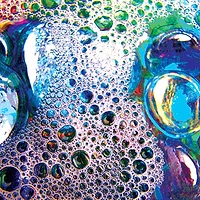The ATP Real-Time Advantage in Sanitation Monitoring

“Food production staff know how difficult it is to ensure that the surfaces on which food comes into contact are clean,” says Jim Topper, Marketing Manager-New Business with Neogen Corp., which has recently introduced the AccuPoint ATP Sanitation Monitoring System, a lightweight, handheld system that measures the ATP collected from food contact surfaces or liquids as an indication of the cleanliness of the surface or purity of the liquid. “If you’re using a method other than ATP bioluminescence to determine cleanliness, such as microbiological monitoring for indicator organisms, you know how long it takes to get your result. In most cases, you’re finding out tomorrow or the day after that your production line was dirty today. At that point, there’s nothing you can do to correct for today’s problem.”
ATP systems such as the AccuPoint, says Topper, work by measuring the light created when ATP contacts reagents in the system’s sampling device. The higher the levels of food residue and microorganisms on a swab or in a water sample, the more ATP, and the more light produced. Thus, the real advantage of an ATP system is it’s immediacy of results. “The plant manager can find out in mere seconds that a particular surface is not ready for production and instruct the sanitation crew to clean it immediately so that processing can commence.”
The answers to a few of the most frequently asked questions that customers pose to Neogen’s expert staff, says Topper, shed some light on how processors can gain the ATP advantage in their operations:
• What is the relationship between the RLU reading I get with my ATP system and the level of bacteria on the surface I’m sampling? It’s important to understand that an ATP monitoring system detects the level of ATP on a surface. That ATP may be from food residue, bacteria, yeast, mold, or some combination of these. While it is true that the more bacteria present on a surface, the more ATP will be reported, in reality, there will never be only bacteria on the surface. To complicate the matter further, there are different levels of ATP in different cells on the surface. Yeast, for example, contains 100 times the ATP of a typical coliform bacteria. Somatic cells contain 3,000 times as much ATP as yeast. If you get a reading with a certain value that number may represent a few yeast cells, a lot of bacteria and some food residue. Or, it may contain a lot of bacteria and a little food residue. There’s no way of knowing for sure.
The other issue is the difference in reporting for microbiological quality standards relative to ATP monitoring. Most often, we’re reporting bacteria counts by the number of colony forming units (CFUs). A single CFU may actually house five cells. Each of those cells contain ATP, the equivalent of five units of ATP. The best way to describe the correlation between ATP and microbiological testing results is that lower ATP results relate to lower micro results. Lower ATP results mean your sanitation crew is doing a good job and your plant is clean.
• So, what’s the point of an ATP system if all I care about is bacterial contamination? While ATP monitoring systems are not direct indicators of bacterial or spoilage organism presence, they are the fastest and most convenient method for determining the potential for these organisms to exist on your food contact surface. And with the ability to make that determination immediately, they allow you to correct the issue before it becomes a serious problem. The other significant advantage you gain with an ATP system is the assurance to others that you are employing a scientifically-based, consistent sanitation monitoring program. Many customers use it to assure their customers that they’re receiving the highest level of food safety possible.
• How do I establish my pass/marginal and fail levels? Our experience has shown that most facilities establish their own values for what is and is not clean. This usually requires a sampling of typical cleaning results compared to extensive or deep cleaning practices. It also depends on where the food goes from the point of sampling. If it’s meant for immediate delivery to consumers in a ready-to-eat format, this implies a different standard than if the food moves on to a further processing operation where it is cooked or sanitized in some fashion. Having said that, our customers in the high-risk category of food processing typically set a pass level of approximately 150, a marginal limit of 299 and a fail limit of anything above 300. We have some customers who set their fail limits as low as 150 but this is a very tough standard to maintain.
• Are photo-multiplier-based ATP sanitation monitoring systems more sensitive than photo-diode-based systems? While it is true that a PMT is inherently more sensitive to light, an ATP sanitation monitoring system that employs this technology is not inherently more sensitive to ATP. There are two factors that determine the lower limit of detection for ATP systems: the sensitivity to light of the luminometer and the chemiluminescent reaction of the reagents in the sampler/swab that produces that light. In other words, it is possible to balance the chemistry to produce more light with an equivalent level of ATP to offset any gain from a more sensitive luminometer. This is the approach we have taken with the AccuPoint system. This balancing has resulted in a limit of detection of 2.6 fentomoles, which means that our system can detect a very small amount of ATP on a surface or in a water sample.
neogen.com
Looking for quick answers on food safety topics?
Try Ask FSM, our new smart AI search tool.
Ask FSM →








